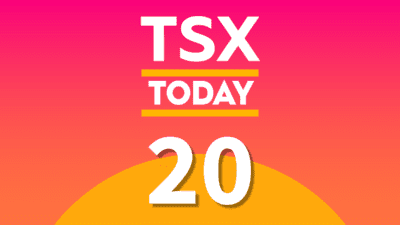Retiring with $1 million in savings might seem like a lofty goal for many Canadians earning a middle-class salary. You may even think that one million dollars isn’t anywhere near close to enough money to support your ideal retirement lifestyle. For others, a million dollars may be more than enough to retire with.
There is definitely no one-size-fits-all plan for retirement planning. What you will find in common with many retirement plans, though, is the path that leads them to build their nest egg.
For most Canadians, saving enough for retirement takes years of dedicated saving. It requires you to not only save your hard-earned money but invest it, too.
Investing in stocks
It may be intimidating at first, but investing in stocks is one of the most reliable ways for Canadians to build a million-dollar portfolio. No investment is ever guaranteed, but long-term investors can expect to earn an average annual growth rate between 6% and 8% when investing in total stock market indexes.
Once an investor becomes comfortable with owning a total stock market index, they can choose to own individual companies. The risk of owning an individual company is that it could very well underperform the broader market’s growth rate. In return, the reward would be the potential to earn growth that outperforms the broader market.
The difference of just a couple of percentage points might not seem like a lot on a yearly basis, but I’ll show you what that could look like over a 30-year period.
If you’re a young investor with several decades still to go before needing to access your retirement savings, I’ll show you how to build a $1 million portfolio. You’ll also understand how just a few percentage points could be the difference between hundreds of thousands of dollars.
Investing in total stock market indexes
There’s absolutely nothing wrong with earning an average annual return in the range of 6-8%. Growth like that is more than enough to turn monthly contributions into a respectable retirement portfolio. The best part is how little time and effort it will take to maintain your portfolio.
Exchange-traded funds make it easy to own complete stock market indexes, and they provide investors with instant diversification, too.
Let’s say you’re able to contribute $500 per month into a Registered Retirement Savings Plan (RRSP) for a 30-year period. If you were to earn an average annual growth rate of 7% throughout those 30 years, you’d end up with a portfolio of $600,000.
Owning individual companies
Utility companies can be some of the most reliable and consistent stocks to own. Predictable cash flows can often lead to much lower levels of volatility compared to other top TSX stocks.
Brookfield Infrastructure Partners (TSX:BIP.UN)(NYSE:BIP) owns and operates utility, transportation, and energy-related businesses across the globe.
The utility company has grown more than 400% over the past 20 years, and that’s not even including dividends. At today’s stock price, the impressive dividend yields 3.8%. The 400% growth is equal to an average annual return of 8.4%.
Using the same example of a $500 monthly contribution over a 30-year period, but now at a growth rate of 8.4%, this time you’d be sitting on a nest egg of $800,000. That’s a difference of $200,000, but it still doesn’t earn you a million-dollar portfolio.
This utility company has been one of the most reliable Canadian stocks to own over the past 20 years. Fortis (TSX:FTS)(NYSE:FTS) has delivered total growth of more than 500%, which is equal to an average annual growth rate of 9.6%.
Plugging in a growth rate of 9.6% into our earlier example would generate a portfolio of just over $1 million. Of that million dollars, only $180,000 was actually generated through the $500 monthly contributions. The remaining $850,000 was generated through compounded interest over 30 years.







